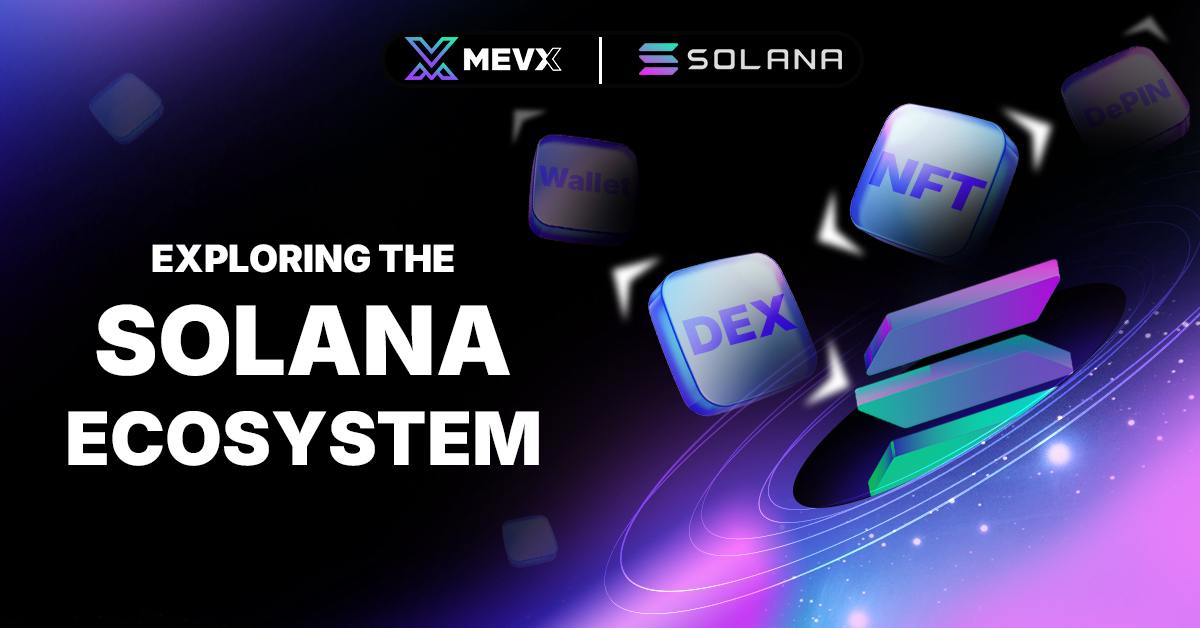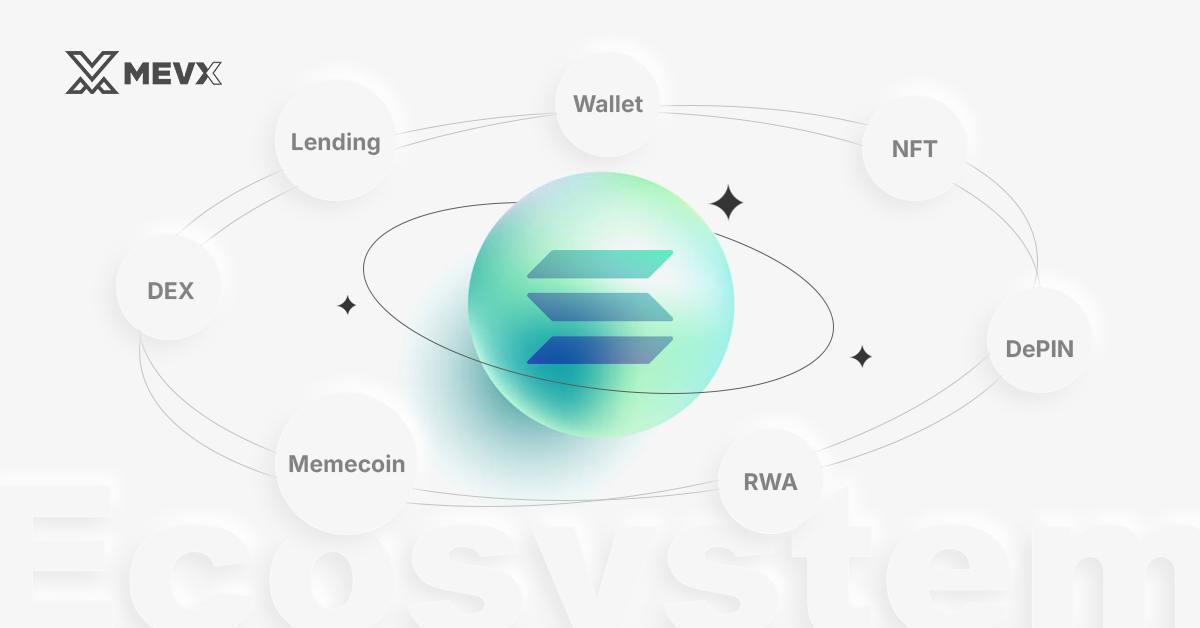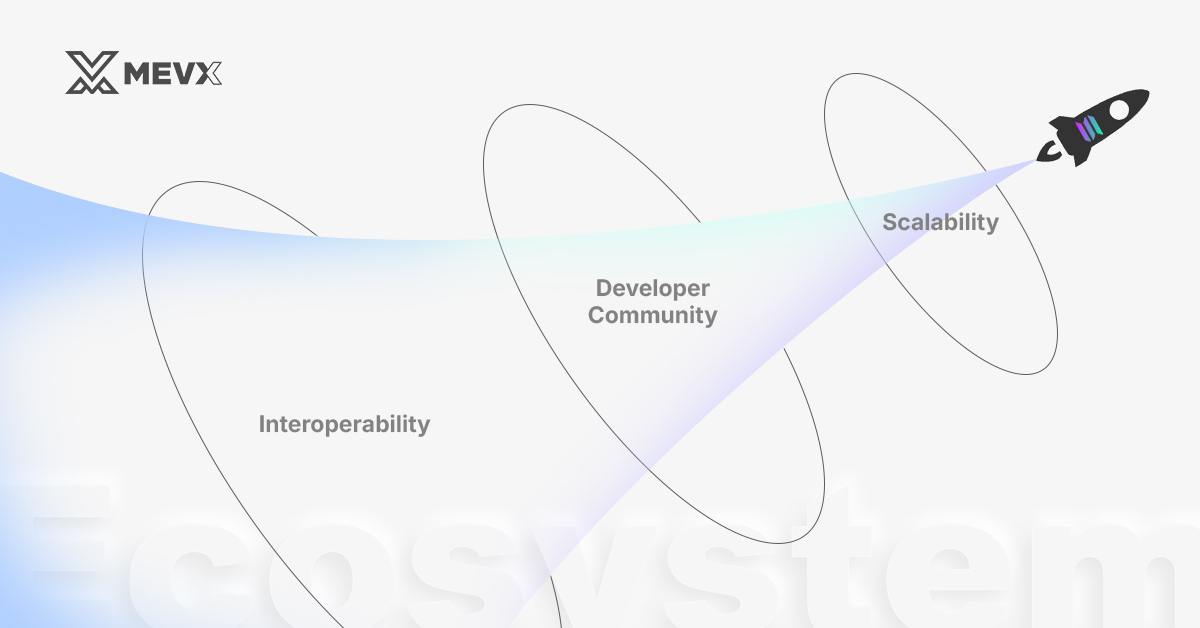Speed and scalability are the keys to the fast-paced world of blockchain technology. That’s where Solana enters with the capability for supersonic transactions and minimal fees; this high-performance blockchain has taken the world into a frenzy. Since its creation in 2017 by Anatoly Yakovenko, Solana has been among the top blockchain platforms for dApps, DeFi, and NFTs. But what makes the Solana ecosystem unique, and why does it house thousands of projects? We will go in-depth in this article to observe the core projects comprising Solana’s ecosystem. Meanwhile, it also looks at popular projects and looks toward its future.

Solana Ecosystem
Key Takeaways
- High-speed transactions: Solana’s architecture allows for up to 65,000 transactions per second (TPS) without sacrificing decentralization, making it probably one of the fastest blockchains in the world.
- Low fees: Due to the network’s efficiency, the average fee is less than US$0.01 per transaction. This is also very attractive for both developers and users.
- Diverse ecosystem: Solana has onboarded a wide range of projects on its blockchain, be it decentralized finance (DeFi) or non-fungible tokens (NFTs), (decentralized applications) dApps, and many more, thereby creating a strong dynamic ecosystem.
Core Projects of the Solana Ecosystem
Below is a look at some of the standout projects across various sectors, each contributing to Solana’s growing prominence.

Core projects of Solana
1. DEX (Decentralized Exchange): Jupiter
Jupiter is the largest decentralized exchange aggregator on Solana, allowing users to get the best price discovery through several liquidity pools.
Jupiter is the leading decentralized exchange aggregator on Solana. This allows multiple pools of liquidity to get together and provide the best price discovery available while routing the trades. On this platform, users will be able to trade all kinds of digital assets on Solana with low slippage to improve liquidity. Integrated seamlessly with several decentralized exchanges, it allows for fast swaps. Indeed, it is one of the primary places for swapping assets on Solana.
2. Lending projects
The decentralized finance DeFi portfolio of Solana’s ecosystem has also reached the lending and borrowing sectors, especially with some of the notable initiatives listed below.
Marinade Finance
Marinade is a decentralized staking protocol that allows users to stake their SOL with liquidity retained through mSOL (Marinade SOL), which can be used across DeFi apps. It is an innovative solution because it lets users earn rewards in staking while participating in other financial activities by improving capital efficiency.
Jito
Jito is a state-of-the-art liquid staking protocol that leverages Maximum Extractable Value (MEV) strategies to amplify rewards further for stakers, with the addition of an auction system that maximizes the value of each transaction. Validators and stakers can finally optimize their returns. Jito’s contribution to the management of MEV underlines its role in the creation of more efficient markets in Solana.
Kamino Finance
Kamino Finance has all the advanced features of lending, liquidity provision, and leverage. The Multiply feature of Kamino allows users to increase exposure to yield-generating assets by borrowing against these particular assets. With its innovative solutions and rewarding users with Kamino Points, Kamino Finance has been placed right at the center of the DeFi ecosystem on Solana.
3. Wallet: Phantom Wallet
Phantom Wallet is the most utilized wallet on Solana for securely and intuitively managing tokens and NFTs.
Phantom Wallet is the default wallet for most Solana users because of its user-friendly interface, additional security features, and seamless integration with Solana dApps. Added support for staking, NFTs, and token swaps right within Phantom’s wallet has positioned it as a key gateway to both new and experienced users alike, contributing significantly to the current adoption of Solana-based applications.
Click to Set up a Phantom Wallet
4. NFTs
Solana has become an NFT hub, from marketplaces to collections, for a variety of projects.
Magic Eden
Magic Eden is the biggest NFT marketplace on Solana, offering users everything they may want about non-fungible tokens, from art to in-game assets. The friendly user interface and super-low transaction fees make this platform an instant hit among creators and collectors alike. Magic Eden remains very important in bringing NFTs into the mainstream on Solana.
Click to Solana and NFTs to see more details
Mad Lads
Mad Lads is a prominent NFT collection on Solana, featuring 10,000 unique humanoid avatars. These NFTs stand out not only for their artwork but also for their innovative xNFT technology, which allows for programmable NFTs that can interact with applications. Mad Lads has become a blue-chip NFT collection, embodying the creativity and technical prowess of Solana’s NFT ecosystem.
5. DePIN (Decentralized Physical Infrastructure Networks)
DePIN projects bridge blockchain technology with the physical world, really pushing the limit on what decentralized networks can truly achieve.
Render Network
Render Network is a decentralized network for GPU rendering so that artists and designers can tap into distributed computing power for rendering. By leveraging underutilized GPU computing resources, Render is developing a marketplace for high-performance computing that reduces costs and ensures greater accessibility for makers.
Helium Network
The Helium Network represents the shift in how one thinks about decentralized wireless infrastructure; users can create hotspots that power a global network. Helium rewards users who provide access to the internet with HNT tokens via its Proof of Coverage (PoC) mechanism. Helium recently migrated onto the Solana blockchain as a means to scale up the network, given that millions of hotspots have gone online worldwide, showcasing a future of decentralized telecom solutions.
6. Real World Assets (RWA): Ondo Finance
Tokenize real-world assets and unlock trading and use in the Solana ecosystem with Ondo Finance, connecting traditional finance and DeFi.
Ondo Finance bridges traditional finance and DeFi through the tokenization of real-world assets like bonds for use in Solana’s DeFi protocols. Ondo offers a route for institutional investors into blockchain finance, where yield opportunities are more stable, sponsored by real assets that will dampen the volatility typically associated with crypto investments. This meeting of RWAs and DeFi is a major jump toward its mainstream financial adoption.
7. Memecoin: Dogwifhat (WIF)
Dogwifhat (WIF) memecoin has gone trending on Solana, building on the increasing fame of tokens with a meme concept. The name is hilarious and viral enough that the Solana community has latched on to the token. The majority of memecoins don’t have any utility whatsoever. Dogwifhat has created its name by structuring a strong social appearance and engaging users via organic traffic, driving traffic to make a project go viral.
Click to Solana’s featured memecoins to explore more
The Future of the Solana Ecosystem
The future of Solana is promising, as more developers and projects have joined the project. On the roadmap are innovations necessary to keep up with the edge in scalability, security, and user experience.

The future of Solana Ecosystem
1. Scalability
Solana’s unique architecture, featuring innovations like Sealevel (a parallel smart contracts execution engine) and Pipelining (which enables fast data processing), ensures that the network will continue to scale efficiently as it grows. The scaling approach taken by Solana has avoided congestion and high fees as seen on many blockchains, including Ethereum.
2. Developer Community
Another key success metric is the growth in Solana’s developer community. The Solana Foundation actively fosters hackers through grants, hackathons, and educative resources. With a strong and vibrant community, one can be assured of seeing further exciting innovations launch on Solana.
3. Interoperability
While the blockchain space moves towards greater interoperability, Solana is perfectly positioned for seamless integration with other ecosystems. Projects like Wormhole, a cross-chain bridge that allows the flow of assets and data between Solana, Ethereum, Binance Smart Chain, and others, foster further connectivity in the blockchain space.
Conclusion
But Solana is so much more than a blockchain, and it provides the infrastructural framework needed to support some of the most innovative projects in crypto. With unmatched speeds, low fees, and an ever-growing developer and user community, Solana is in a prime position to stay at the leading edge of cryptocurrency for many years to come. A plethora of possibilities will ensue as this ecosystem grows. Be it DeFi, NFTs, or even just a new blockchain technology in general, the innovation space is both dynamic and exciting on Solana.
Share on Social Media:
